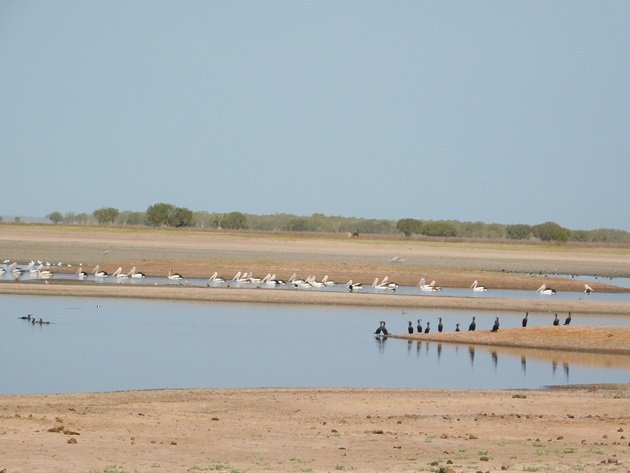
It is that time of year when we patiently wait for the wet season rain. It is hot and the heat haze is bad not long after sunrise, so not ideal for photography, but great for observing large numbers of birds. As the ephemeral lakes dry out the birds all have to congregate at what water remains. Even though the water is shallow it still attracts Australian Pelicans and both Little Black Cormorants and Little Pied Cormorants. The photo above shows the dry dust bowl that surrounds what was a huge lake only a few months ago, but now the water has evaporated.
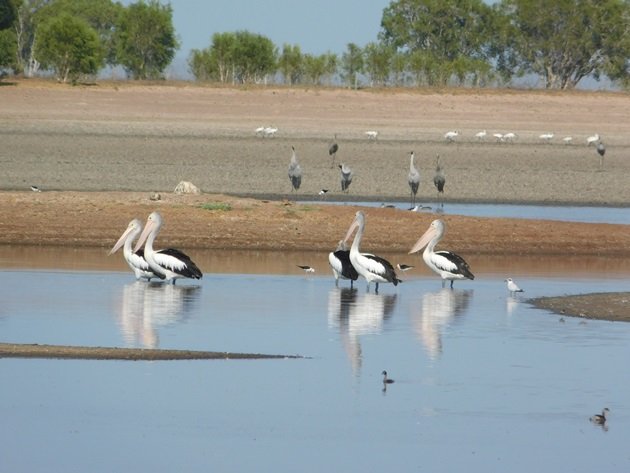
Australian Pelicans, Brolga, Royal Spoonbills
Last weekend we got to the lake quite early, but the heat haze was already pretty bad. The birds were all gathering around the edges and flying in to drink. There were literally hundreds of Peaceful Doves, Diamond Doves and both Zebra Finch and Long-tailed Finch coming in to drink. There were also Crested Pigeons and Bar-shouldered Doves. An Australian Bustard was down at the water’s edge drinking amongst the Royal Spoonbills and a White-faced Heron.
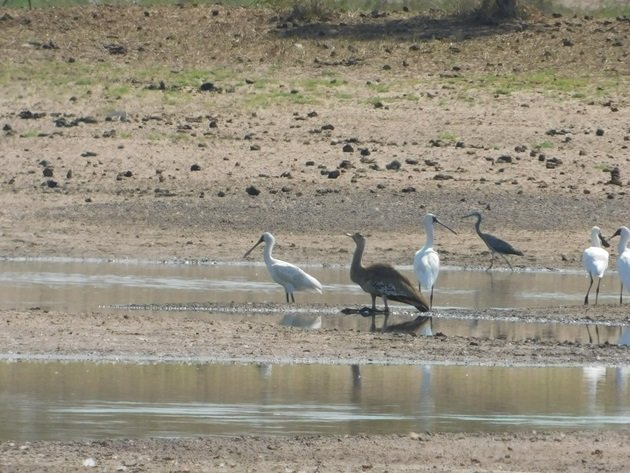
Australian Bustard drinking
As we scanned around the lake observing numerous bird species more and more species came in to drink and bathe. The species at the water included Masked Lapwings, Black-winged Stilts, Black-fronted Dotterels, Red-kneed Dotterels, Long-toed Stint, Red-necked Stint, Red-capped Plovers, Great Egret, Little Egret, Australasian Darter, Glossy Ibis, Australasian Grebe, Grey Teal, Pacific Black Duck, Pink-eared Duck, Australian Wood-duck, Hardhead, Black-necked Stork, a lone Black-tailed Native-hen, Common Greenshank, Wood Sandpiper, Sharp-tailed Sandpiper, Marsh Sandpiper, Black-tailed Godwit, Gull-billed Terns, Whiskered Terns, Yellow Chats, Australian Pratincoles and Oriental Pratincoles.
The surrounding trees and bushes offered more bird species and we moved slowly around the last of the remaining water enjoying all that was to offer. We know that once the rains do come then the area won’t be accessible, so we wanted to make the most of it. There were Brown Songlark, Horsfield’s Bushlark, Australian Pipit, Torresian Crow, Nankeen Kestrel, Brown Falcon, Black Kite, Whistling Kite, Brown Goshawk, Wedge-tailed Eagle, Galahs, Great Bowerbird, Rufous Whistler, Paperback Flycatcher, Willie Wagtail, Purple-backed Fairy-wrens, Tree Martins, Magpie-larks, Grey-crowned Babblers, Black-faced Cuckoo-shrikes, White-winged Trillers, Red-winged Parrots, Pied Butcherbirds, Australian Magpie, Jacky Winter, Red-tailed Black-Cockatoos, Black-faced Woodswallows and White-breasted Woodswallows.
There were exceptional numbers of Brolga and Little Curlew and they kept dropping in from very high up. The sky was full of falling birds all dropping in to the last remaining water. The Brolga appear to drop their legs rather too early, but they must be adapting to the wind to perfect their landing. It is hard to do justice to the spectacle of so many birds all congregating together as we all patiently wait for the rain.
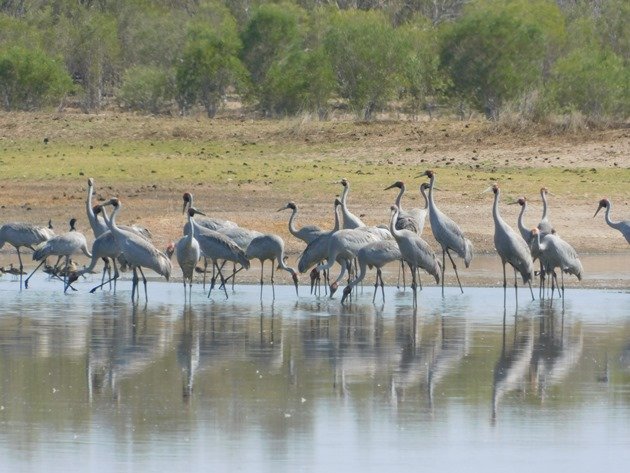
Brolga gathering to drink
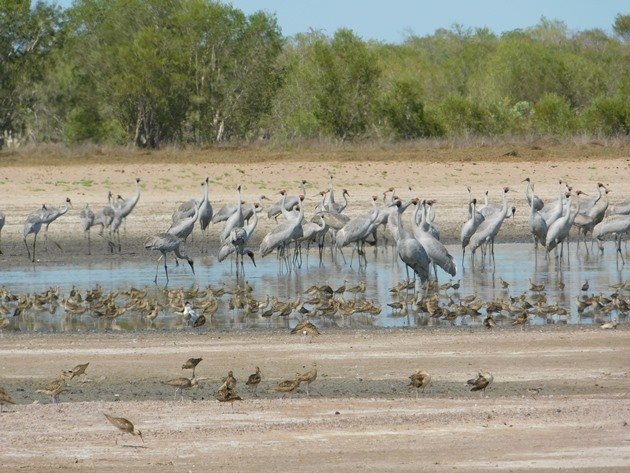
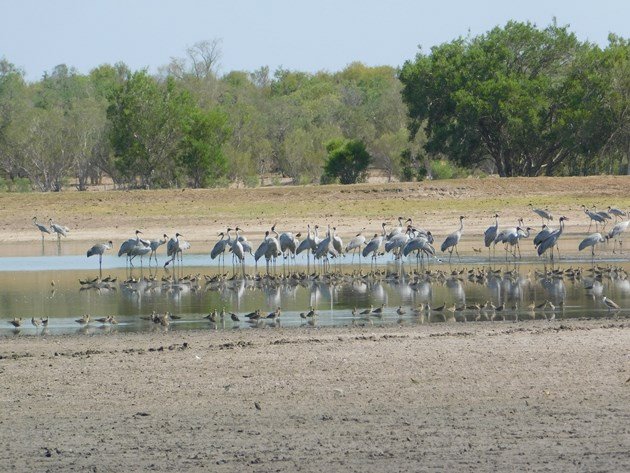
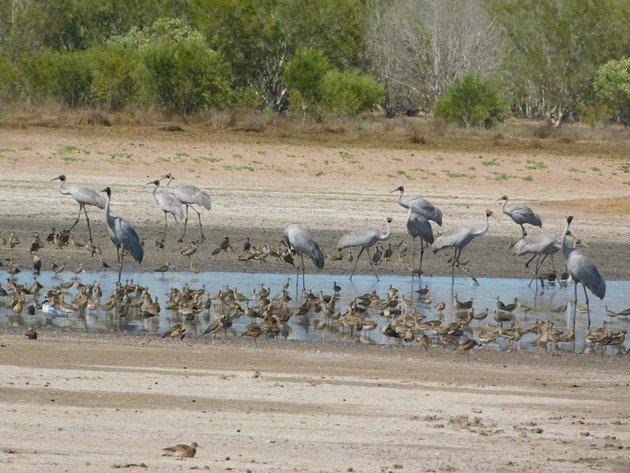
Brolga and Little Curlew
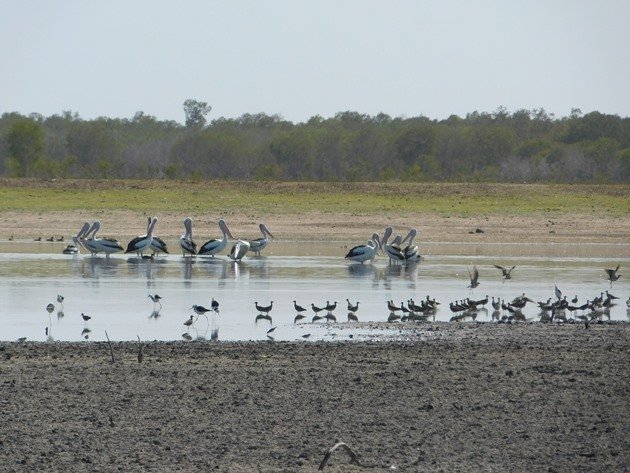
Australian Pelicans and Little Curlew
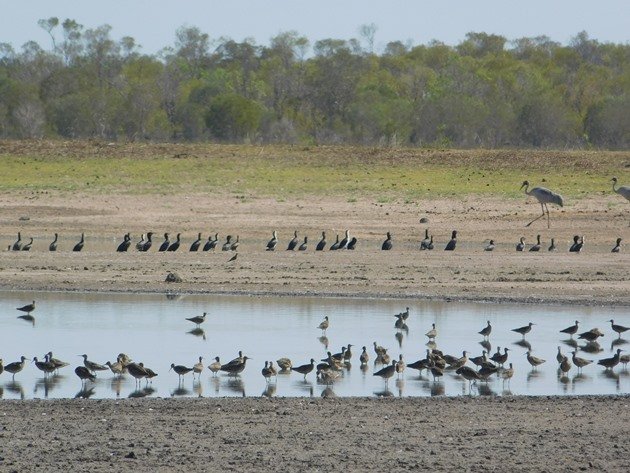
Brolga, Little Curlew, Little Pied Cormorants and Little Black Cormorants
We are all ready for a change in the weather! The lakes are in desperate need of a top up to see the birds through the next few months. Usually once we have had a few good storms the rain will set in and become more regular for a few months, but every year is different and that is part of the enjoyment of living where we do. We are never disappointed with what our local patch has to offer!











What incredible diversity and numbers of fabulous birds! Your post is really fascinating, too, about the wait for the wet season rain, and that it’s different every year.
We’d like a “wet” Christmas instead of the “white” Christmas of the northern hemisphere!